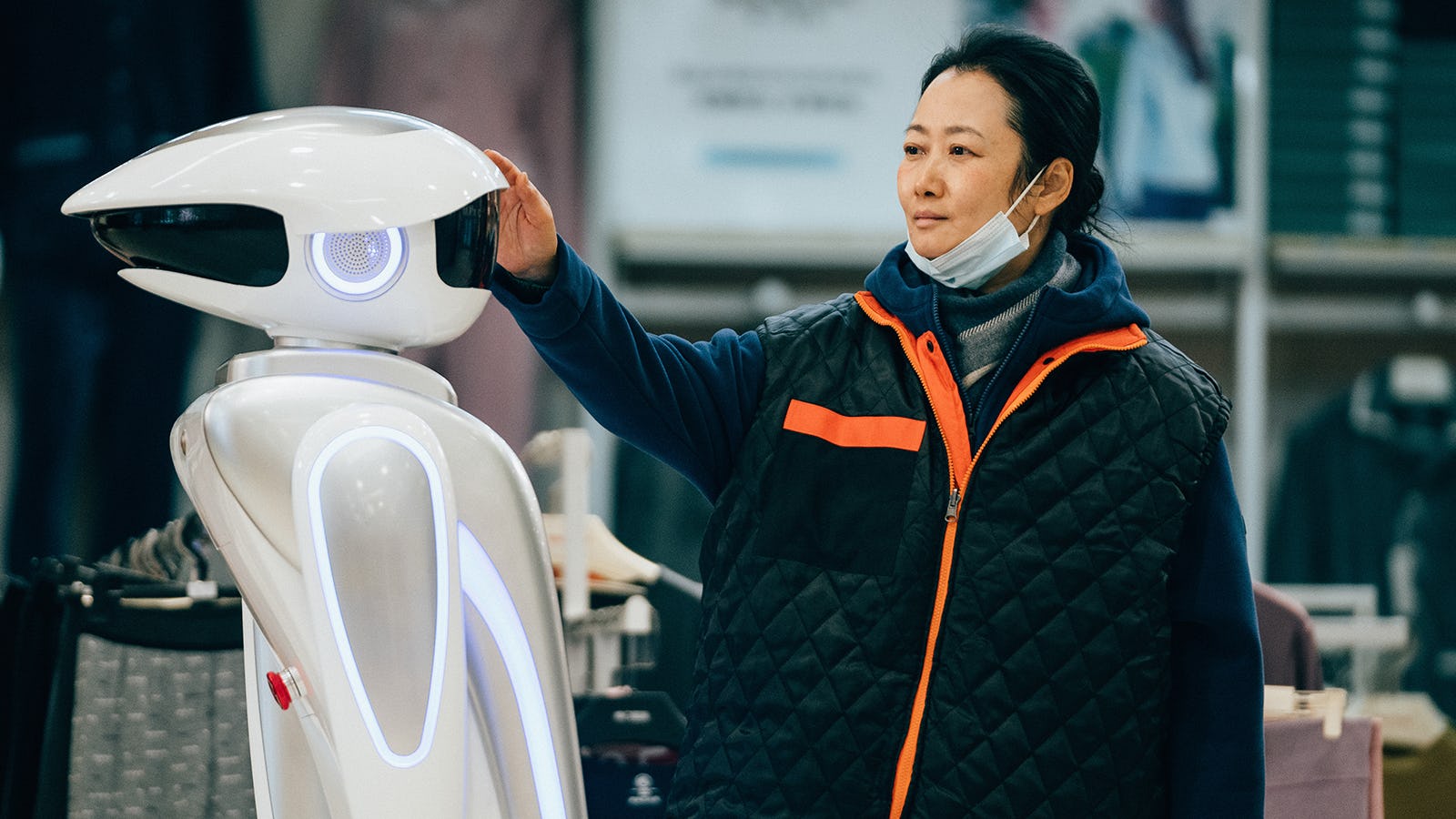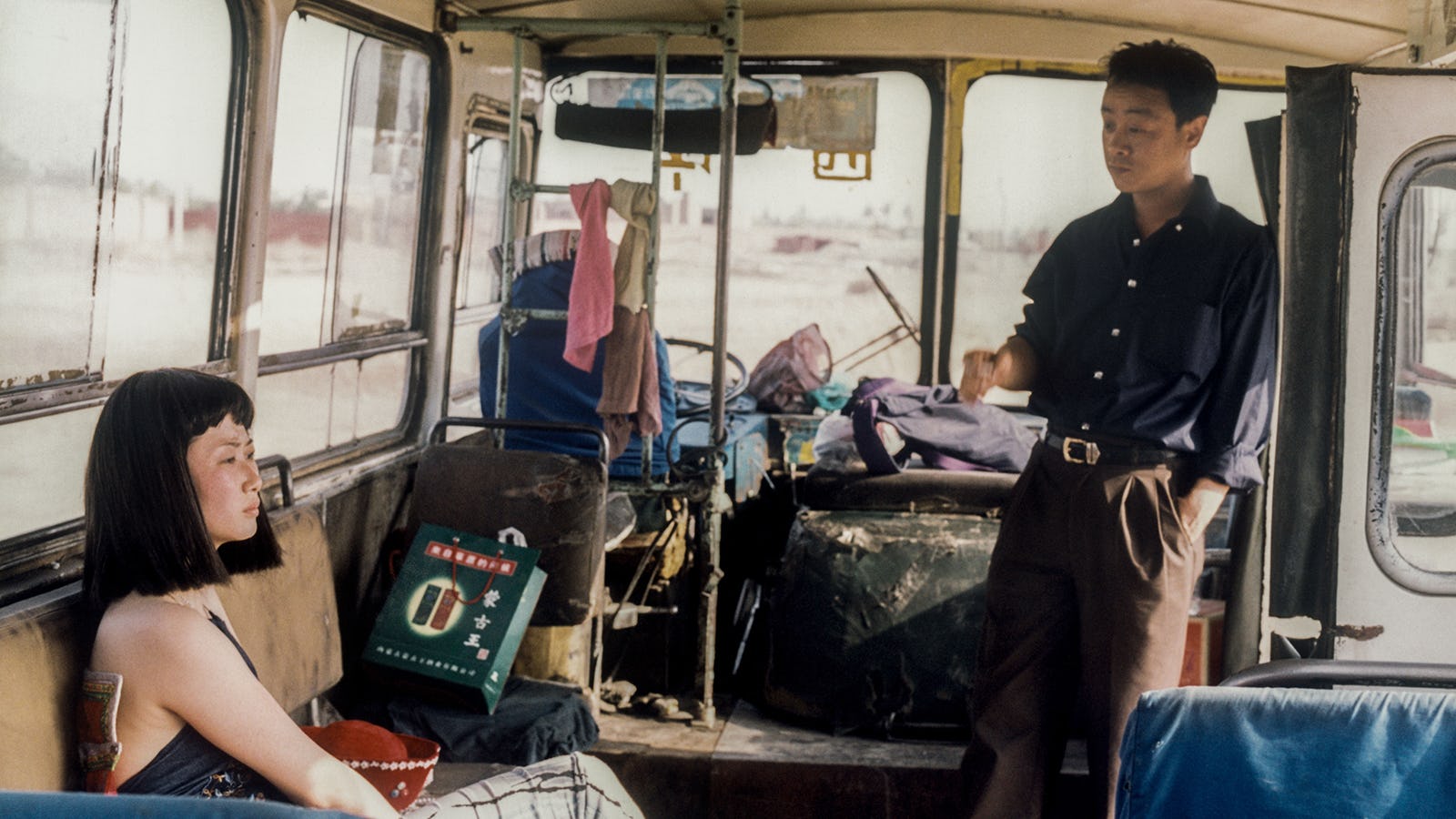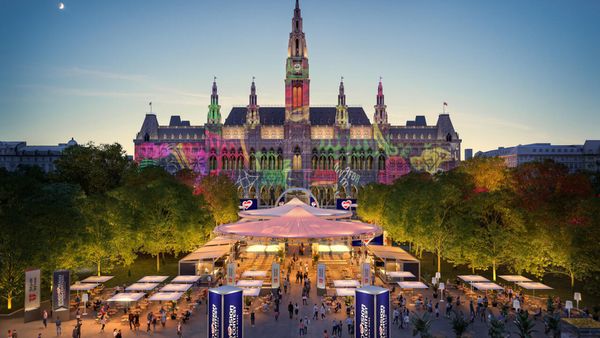
In 2016, foremost Chinese filmmaker Jia Zhangke first alluded to making a film out of unused footage that he shot with a DV camera between 1999 and 2000. “I would usually, aimlessly go about shooting footage, Jia said. “This is a habit I still maintain up to this day, and I have a lot of raw footage using different types of cameras and captures throughout the years. I might have a future plan of editing this footage and making it into a film.”
Almost a decade later, Jia finally made that film. And it may be one of the most ambitious, immersive cinematic achievements released in this century.
Caught By The Tides is a 22-year saga that charts a romance between a model and club girl named Qiao Qiao (Zhao Tao) and her manager Guao Bin (Li Zhubin), as they navigate the changing landscape of contemporary China. Made up of the meandering, experimental scenes that Jia shot on his DV camera and footage and outtakes from his films Unknown Pleasures, Still Life, and Ash Is Purest White, Caught By the Tides is less a movie than an impressionistic meditation on the nature of our changing world and how new and emerging technologies shaped it. Jia was inspired to finally make the film during the COVID-19 pandemic, when filming in China was nigh impossible, thus prompting him to revisit the unused footage he had collected over the course of a quarter century. Because of that, there isn’t much of a real planned narrative to Caught by the Tides, but the story that emerges, almost by accident, makes the film all the more intriguing.
Qiao Qiao is a character that Zhao Tao, Jia’s wife and longtime muse, has played in two prior movies, though neither of them were related to the other. Meanwhile, Li Zhubin’s Bin comes from Jia’s 2002 film Unknown Pleasures. That Jia manages to extract a new story featuring the two of them is nothing short of a miracle. The film follows Qiao Qiao in 2001 as she tries to reconnect with Bin after he leaves the northern Chinese city of Datong, to try to earn money in another province. When she doesn’t hear from him, Qiao Qiao goes on a long journey to find him, passing though communities that are being displaced by the Three Gorges Dam, and all the way through Guangdong Province. Everywhere she goes, she’s met with images of urban decay, but also, rapid industrialization.

Jia’s DV footage of these roaming scenes of the Chinese countryside, on the cusp of technological upheaval, makes Caught by the Tides feel even more like unearthed archival footage of a time long since passed.
This feeling of watching a cinematic snapshot of a certain time and place is magnified by the film’s moving final act, which takes place in 2022 in COVID-era China. Both Qiao Qiao and Bin have noticeably aged. Qiao Qiao, once so full of verve and longing, has become a weary cashier at a grocery store. Bin, once so mercurial, is now noticeably more frail and humble. When they run into each other, Bin going up to Qiao Qiao at her job and waiting for her to recognize him, they both wordlessly acknowledge that their time, just like that time in 2001 when Qiao Qiao embarked on her odyssey, has passed. It’s a quietly devastating ending to a curious romantic saga, one that takes place in the margins of Jia’s heady exploration of the changing state of contemporary China.







